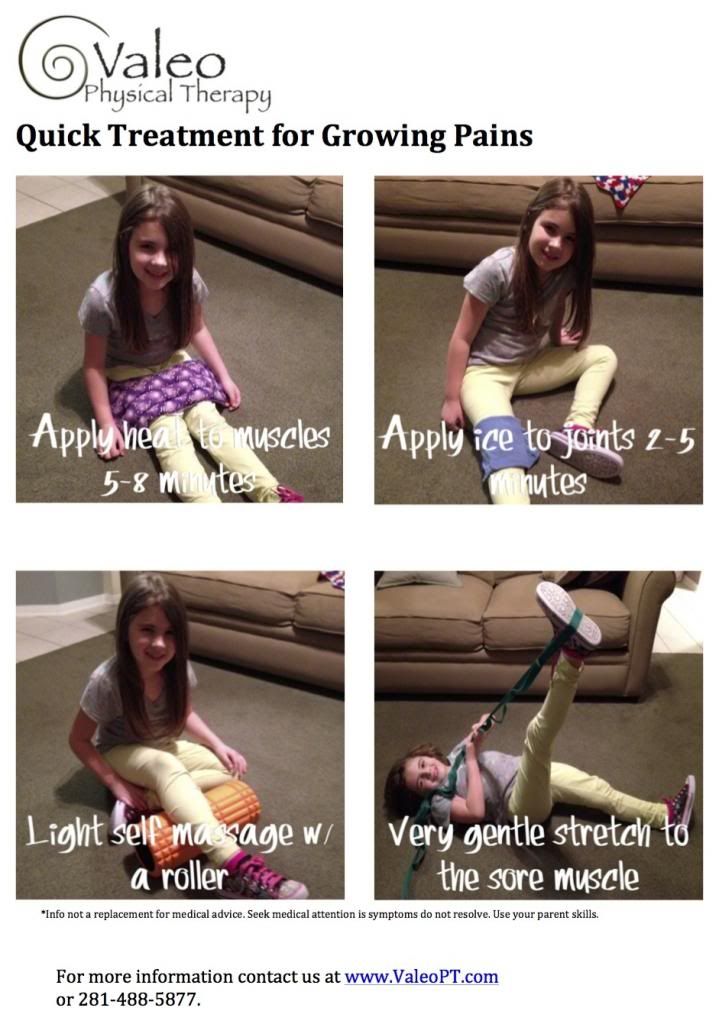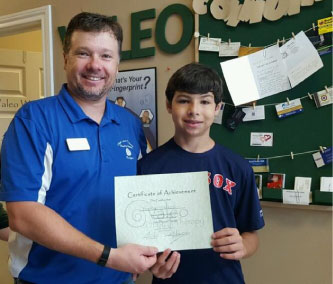Quick Treatment for Growing Pains
This has been one of the challenging areas for me as a Dad and a Physical Therapist. My daughter, who recently turned 7, seems to come up with these sometimes random, but sometimes not so random leg pains. These pains are generally passed off as “growing pains” and dismissed as a rite of passage. This becomes difficult for me being a guy (solve anything) and a P.T. (solve anything related to the body) to just dismiss. What can I say, I am a solve it kind of guy.
Research “tells us” that the pain is typically going to occur on both sides, usually comes on at night, pain is typically located in the muscles of the shin, calf, thigh, or back of the knee. The pain is not usually in the joints (this one is particularly interesting to me – I’ll explain later). Pain can be mild to severe, the kids feel better in the morning, and no signs of inflammation (that can be seen). This last one is also interesting – children may be moody or tired when experiencing growing pains.
As I have evolved as a P.T. my trust in research has definitely taken some hits. Don’t get me wrong I think research is great and we absolutely need it, but I sometimes think that it can take some of the common sense out of problem solving. Point – I treat a ton of patients who seem to have “joint pain” and they swear that the joint is the problem. We start looking at other areas/structures of the body and find a muscle that is so locked up that the joint cannot move correctly or the muscle is simply causing referred pain to this area.
Why do I bring this up? Because as I was reading the studies on Growing Pains, they all said no joint pain. My daughter has joint pain! Does this mean she doesn’t have “Growing Pains”. I don’t know that answer, but what it has lead me to do is treat it with the same philosophy I use with all my patients. How does it effect the way they move? Apply an intervention and observe the result. I also find that doing a little digging can help you understand what may have contributed. With Anna, a lot of time we have found that she played hard on the playground or at P.E.. This doesn’t necessarily solve it, but it at least helps me with what could be causing it.
So, what as worked with Anna.
1. If the soreness seems to be in the muscles themselves and the muscle seem tight to touch – apply Heat to the muscles for 5-8 minutes. WHY 5-8 minutes, I’ve always heard you should heat 15-20 minutes. Great question and for 2 reasons, the first is their skin can be more sensitive than an adults so take it easy and maybe add more layers between the heat source and the skin (point here is be a parent and monitor like you would for bath water temperature). Second, they don’t usually have the patience to sit still that long.
2. If the pain is reported to be at a joint – apply ICE for 2-5 minutes. Yes, this time is kept short for the same reasons above.
3. Teach them how to complete a light self massage or you can complete the light massage (sometimes this can turn into a tickle fest – but that can also be FUN).
4. Add a very gentle stretch to the sore muscle.
**Remember, this info is not a replacement for medical advice, if symptoms don’t resolve use your super hero parent skills.

What if these tricks don’t work or the soreness keeps coming back or comes back very quickly.
First, make sure that you worked the process. I would not do heat or ice alone without some light massage and then stretching. Put it all together. If it seems to be tight muscles use the heat, then massage, and then stretch.
Next – observe, did it work.
If you find that the system is not working then it may be time to get some outside help with the detective work and here is where a good physical therapist can help.
I want to say a quick thank you to Anna for being a great model! Love you Sweetie!

